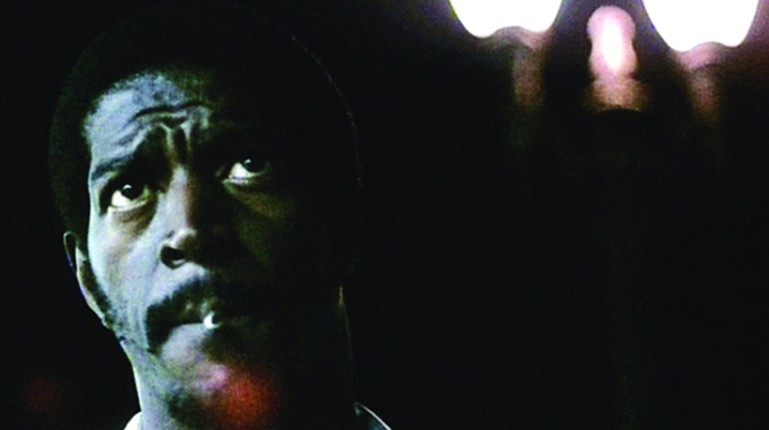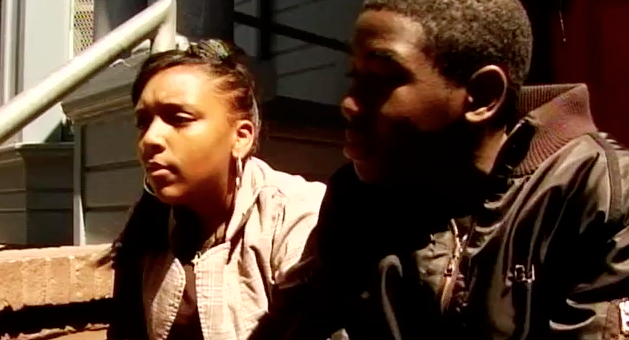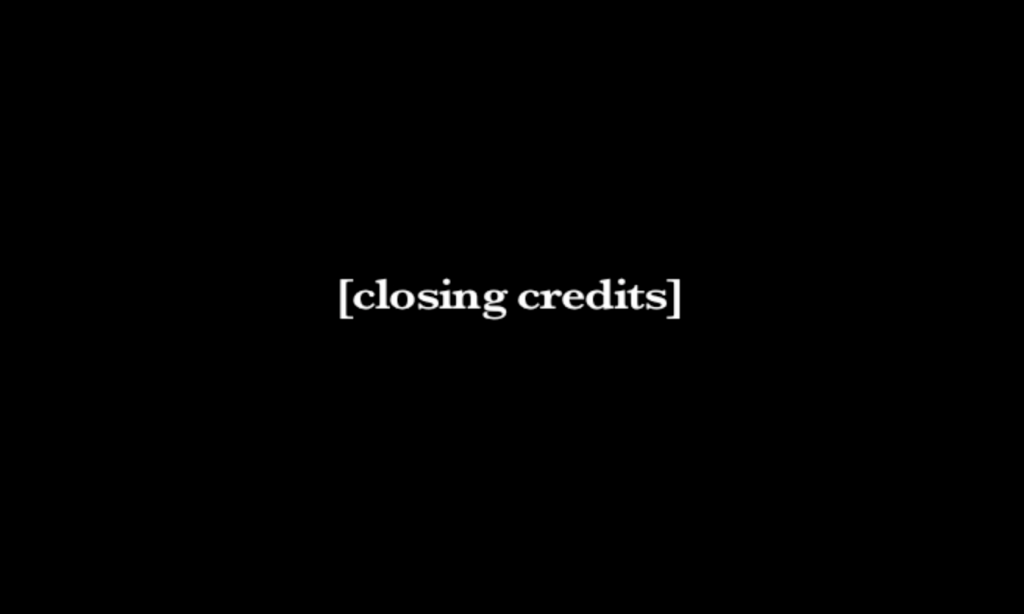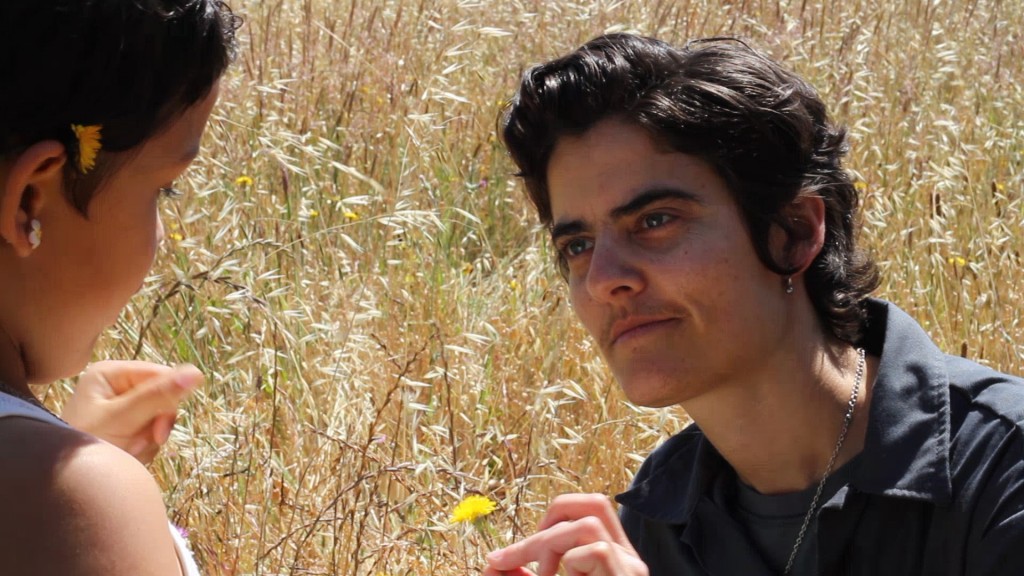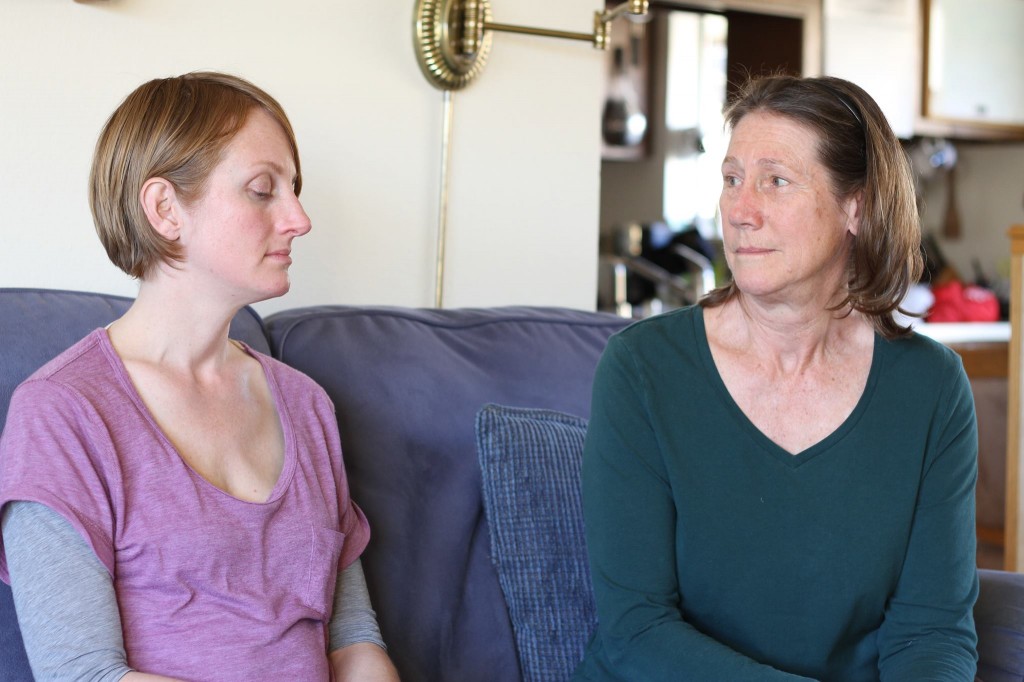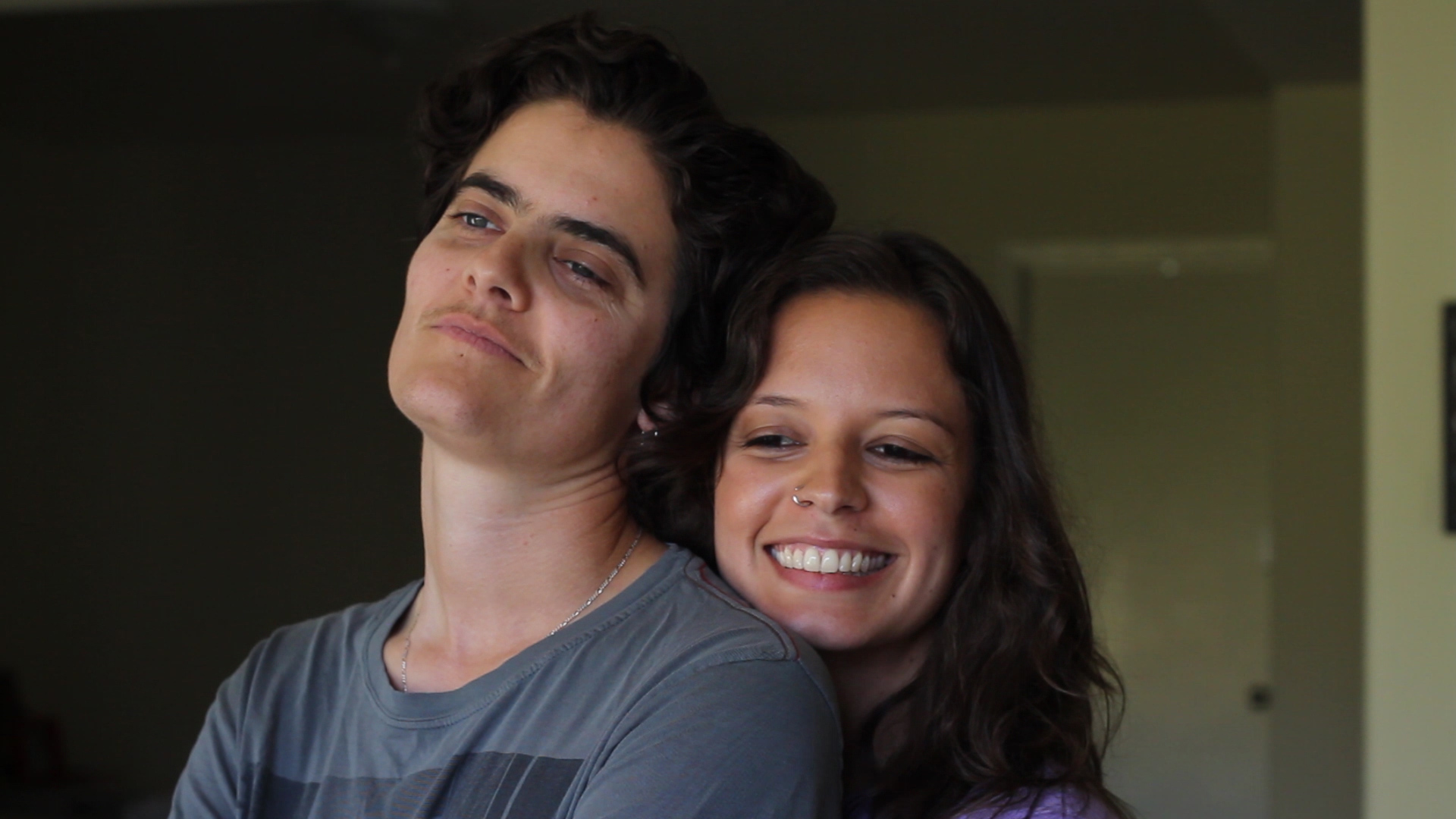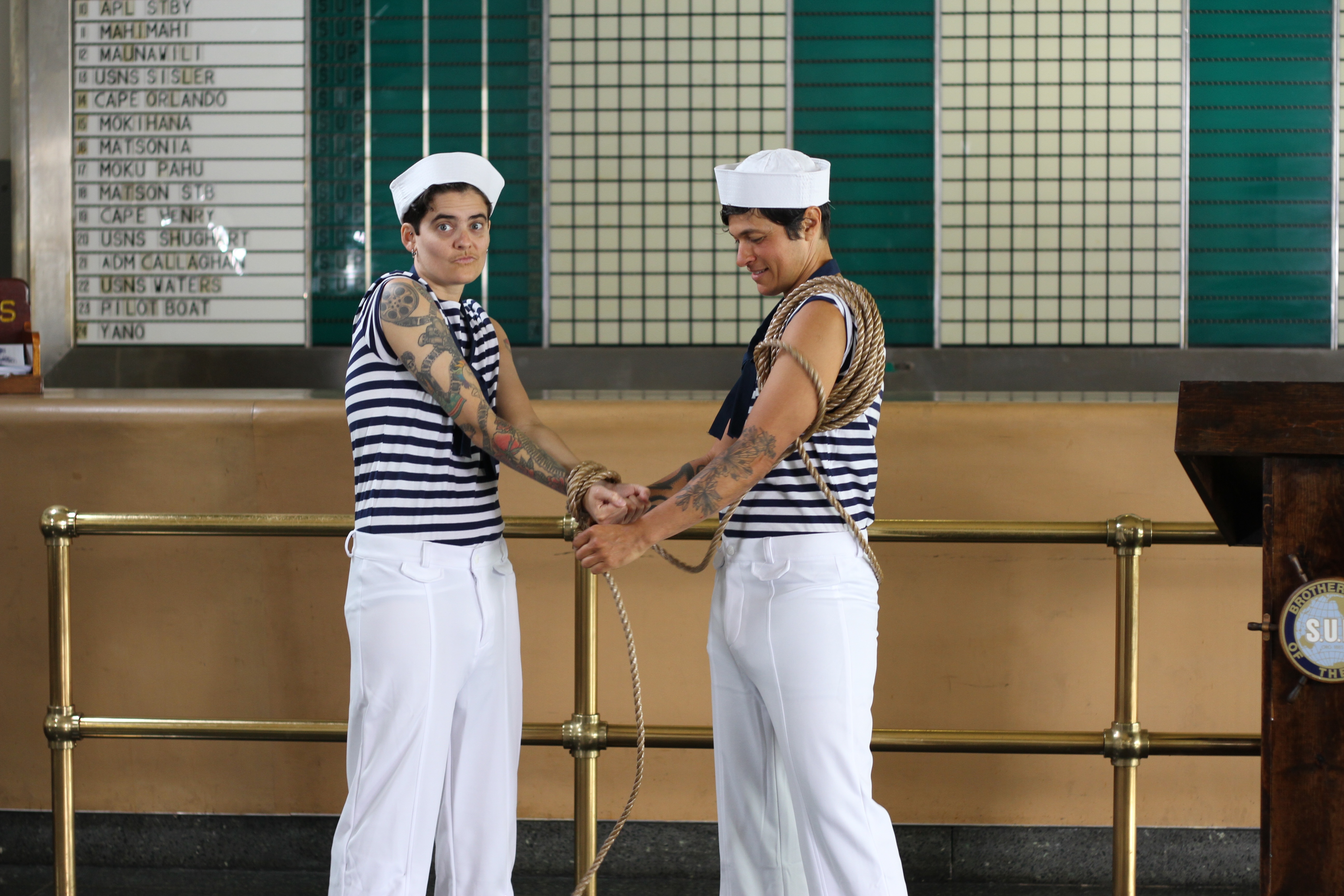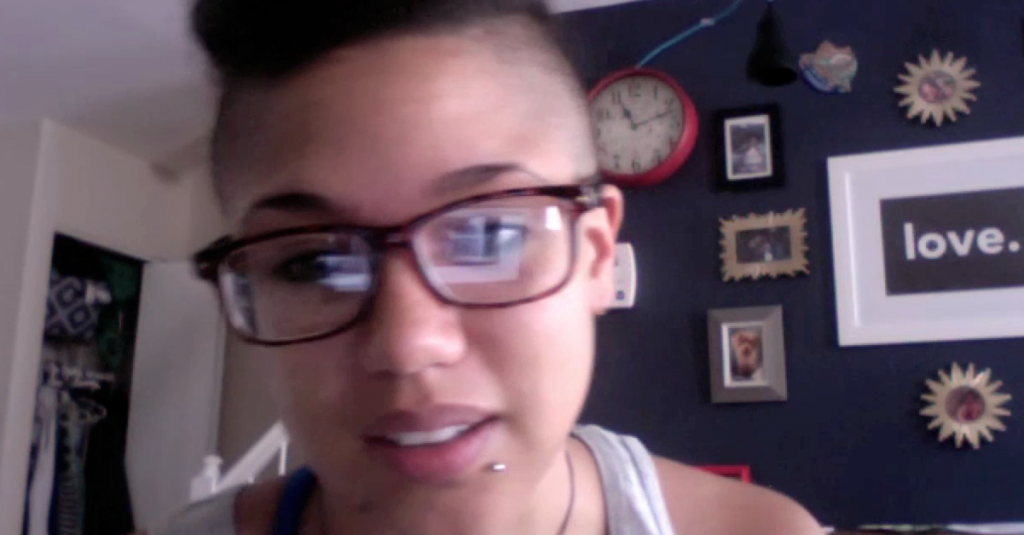 This past summer, I had the opportunity not only to see Be Steadwell’s short film, Vow of Silence, at the Queer Women of Color Film Festival, but I was also able to connect with her for an interview. Vow of Silence won the Audience Award at the festival. What follows is a rumination on film, sexuality, race, inspiration, and this particular, formative moment in time for queer artists and filmmakers.
This past summer, I had the opportunity not only to see Be Steadwell’s short film, Vow of Silence, at the Queer Women of Color Film Festival, but I was also able to connect with her for an interview. Vow of Silence won the Audience Award at the festival. What follows is a rumination on film, sexuality, race, inspiration, and this particular, formative moment in time for queer artists and filmmakers.
How was your time in San Francisco, the Bay area?
Aw man, it was so good. Just a lot of support.
Had you been out here before?
Yeah, I spent some time there, but it’s been like six years. It had been six years since I’d been there, and I used to wanna live there. I mean, I’ve always wanted to live there, but, yeah, it was kinda like a second home to me for awhile, and still is.
Tell me about your life. I saw your film at QWOCFF, I thought it was amazing, and I noticed you kinda making the festival rounds. In a nutshell, in brief, what’s your life story?
Aw man. How do I sum up my life story? Well, I grew up just loving pretty much all art forms. And, I was kinda shy, so singing and stuff didn’t really come up until later. I wasn’t like an outgoing, show-offy type. Then in high school I tried out for a jazz band as the singer, and got in and just started singing that way, and still doing different art forms. And then in college, I got a degree in black studies and visual arts. I joined an a cappella group, which was really nerdy but really good for me. But the school I went to, Oberlin, it’s got this fancy music conservatory.
You were at Oberlin for undergrad?
Yeah, yeah, but I wasn’t in the conservatory, and I felt like – there was a lot of snobbiness around music there, because there were all these geniuses running around, and so I did the a cappella thing but I didn’t really write while I was in college, because I think I was a little scared of being judged. Or, I just didn’t feel like I knew enough to share with people. And then after I graduated college, my friend from high school and I started a group called The Lost Bois, and we basically wrote goofy rap songs about being gay and being weird. For awhile, that was everything that we did and we started shooting and editing our own music videos, which was great. And then, I really enjoyed that. I’d never really done a video before – I’d done photography and other things, but I really loved video and I still didn’t feel music was reliable as a career, so I decided to get my MFA in film. Meanwhile, my friend was getting a real job and had less time, so I started, just for fun, writing songs on my own, and sharing them. That’s basically where it’s been. I got my MFA – the film Vow of Silence was my thesis film and after I graduated, I was trying to get jobs teaching, in colleges, teaching film, and I couldn’t find any. I couldn’t get any, and I sort of decided to do music full time, or to do art full time, because I really didn’t have other options. And it’s kind of working. I don’t know, I mean it’s really hard, but so far it’s okay.
Cool. Thank you. Did you grow up on the East Coast, then?
Yeah, I grew up in D.C.
Oh, okay. Now, I grew up as a pretty shy person, too, so I wanna ask you – what do you think contributes to shyness and what do think is the best way to keep going, to get beyond it?
Hmmm. Yeah. I think, I mean – I guess it’s different for everyone, but for me, I’m the youngest, and I’m like five, six, and eight years younger than my siblings, so I was like a little kid to everyone. Which meant, I was always just the baby. I never felt like, I felt like it was harder to be taken seriously. So there was that. And also just being different at school. I went to school with a lot of white kids, and I didn’t feel like I fit in, I didn’t feel like I was pretty or whatever, and I just felt in my own head and I didn’t think that people got it. And I still feel that way a lot. I don’t know. I guess just encouraging people to love who they are. I taught a little bit, young kids, film, and I just would really reach out to those kinda quiet kids. The outgoing kids are the ones who immediately get noticed, and get attention, and get praise, and I just feel it’s like a really weird pattern to fit into.
At your Q&A for the film, you said you wanted to explore music and spirituality. Talk a little about your process of creativity, and I know that may vary depending on what you’re working on, but what obsessions cause you to create things?
Well, the first thing that happens, is – do you use Netflix?
I do.
Yeah. Do you ever go on Netflix, and you’re looking for a movie, a particular movie, but it doesn’t exist?
Yeah, yeah.
I mean, it happens every time. And sometimes you lower your expectations but even then, you know, it’s not there. I think probably the first impulse that makes me wanna create film, and even music, is that there’s something I really want that doesn’t exist. And that sucks. And also, seeing something that does exist, that is like something that you want, feeling really human, and feeling understood, and feeling inspired, like when I saw Pariah. I don’t know if you’ve seen it, but when I saw Pariah – that’s when I thought about being a filmmaker. There are so many things here. There are characters that are complex, that I understand, and relate to all of them. There’s brown people with different colors of brown and you can see their faces, and there’s richness in their skin, and there’s queerness and complexity with gender, you know? When I saw it, I was like, “Oh my god, this is so cool!” And sometimes you don’t really feel something’s missing until you see it.
Cool, yeah, I have seen Pariah and I agree with everything you just said.
Yeah.
Something also about Vow of Silence, is also the richness and complexity of that movie. And the fact that a young woman goes to a party and there’s someone playing a cello, and there’s a scene with her playing the cello under a bridge, and so many scenes where things just are. There are brown people in it, queer people in it, and never is it beating you over the head with any big message except for lost love, new love, personal choices, passion, art, and spirituality. So, tell me whether or not that’s a conscious decision to not have a coming out film or something that’s been done before. Is that something you’re conscious of, and how does that play a role in what you create?
Yes, yes. That’s another thing. The films, queer and lesbian films that exist. Well, typically lesbian films are almost all coming out stories, you know, these really sad, you know, this one has a boyfriend, this struggle with identity, and that’s such a small piece, you know, of our – I mean, it’s important, but that’s such a small, tiny fraction of our experiences. A lot of us are really just living lives now, and falling in love and having relationships, so that’s what I wanted to see. The other thing that happens a lot with, I think, with black films that center on black characters is like a lot of struggle and a lot of pain and drama. And that’s fair too, but I guess I just wanted to talk about love. I really didn’t want anything else in there. And I didn’t want it to be about the outside community, I didn’t want it to be about racism or homophobia because, those are real, but in my personal experience I live amongst my community and most of the time I’m really just comfortable in that space. And I’m comfortable as myself. And conflict comes up between people, you know, because of conflict, not because of sexuality or race. So, that was definitely conscious to do it that way.
I hear you and I really appreciate that. Awesome, thank you, I’m right there with you.
Are you a filmmaker?
I am a filmmaker, yeah.
Cool.
Yeah, I had a film on Saturday night at the festival.
Aw man.
And now I’m starting to make all my stuff available online, just for free. So I’ll send you a link.
Yeah, please.
But I’m in the same place. And I’ll talk about myself for about 10 seconds. But um, yeah, I’m in the same place where I just wanna talk about stuff – life, love, birth, death, that are universal, that we’ve all experienced or will experience that are outside any notion of the larger racial or sexual struggle. I’m kind of over the word struggle. Not that it doesn’t exist….
Right, right….
Yeah, not that those stories aren’t important, but again, they’re just a piece of the overall humanity. I think only having one element of that story kind of deprives us of our humanity.
Yeah, and it’s like – I struggle with it because it’s like, okay, it is part of our experience. We have to, we have to confront it. You know, in theory, white people, they have the privilege to not, you know, to ignore it. Which is why they get to have movies that have nothing to do with anything but love, or you know, whatever.
Yeah.
But at the same time can we really ignore it? You know, it’s there. It’s always there.
Yeah, but at the same time you have to remind people that it exists, but also in doing what you’re doing, what I wanna do, it humanizes us, and it forces them – if they actually see our movies – to see us in a new and different light. And I think that that is also really important in changing the images of African Americans, queers, and people of color.
Yeah, yeah.
I don’t know if you saw that really amazing clip of four African men who were talking about stereotypes of Africans in film.
What was that?
It’s really amazing. They just kinda – they show all these images of machine guns, and it’s making fun of – they talk about the same thing. All you see is people in berets with rocket launchers.
Yep.
Another question is – I guess, what do you think is unique about this moment in time, when we have things like QWOCMAP, we have – gay marriage is now legal in all states….
Right.
And, you know, I’m a little bit older, I remember when I was growing up, you’d get beat up if you were even suspected of being queer. So given that, what do you think is unique about this moment in time, and where do you see yourself in it?
Long sigh.
Ummm, hm. That’s an awesome question. But I’m not sure. I mean, it feels really good in some ways. Like, I was working at this 4th of July party. I was just like cleaning up and washing dishes and stuff – and it was mostly black folks and a lot of lesbians were there. And everyone was so happy on that day. And it wasn’t like any particular thing. It was just like everybody I saw all day was – happy. Like this is the day where I’m proud, you know, the fireworks went off, and I was kind of like, emotional. So, the marriage equality stuff, really – though that was something that wasn’t my main concern….
Same here, yeah.
Laughter.
But it means a lot. It really means a lot. And at the same time, I still have plenty of friends who’re planning their wedding. I just asked a woman, this really great guitarist, a black woman in D.C., to play in my band, and she said that her Christian values wouldn’t allow her to play certain songs. You know?
Yeah.
There’s still a lot – there’s still so much, so it’s a weird point where we definitely can fall into the trap of assuming that everything’s cool and there’s no conflict anymore, that we’re just gonna turn around like Mary Poppins….
Laughs.
But there’s still folks being harassed, and murdered by the police – it’s just a lot. There’s a lot. But I think as a queer artist, we – I don’t even know. I think mainly I just want us to be conscious consumers of our own art and businesses. And that will allow us to control our own media. Because in theory, I guess, lots of people could invest in it, in gay music, in gay film, and start doing that. Which will probably happen. But, I don’t think they’re gonna get it. So, my goal is to really – it’s not to get signed, it’s not to – I mean, I would love to have investors for film, because it’s expensive. Oh my god. But really staying independent and letting the audience grow and come to you. And keeping control of that creativity. That’s what I’m excited about and I hope will happen to me. That’s kinda vague, but I’m just like – I want us to find each other. And become a force. We don’t have to like all of the same things, and we won’t, but we can at least say, “Look, there’s this movie, there’s this song, there’s this visual artist, installation artist, and just have our own world, our own space.”
Cool, thank you. And my last question: how do you identify racially, if at all, and how has that affected things for you?
Yeah. I identify as black and multi-racial. So, my mom’s white and my dad’s black, and I think that my experience growing up around white kids, mostly, meant that I was black. I mean, to them. So, my experience encompasses that, and multi-racialness. But it’s cool, it’s exciting, it’s definitely more visual, I guess, now – you know, with Obama….
Uh huh.
But I think growing up it was hard to fit in. Even in college, there were some black people who straight up told me I’m not black.
Hmmmm. Yeah, I’ve gotten that kinda thing.
And there are white people who say it, too.
Yeah, yeah.
And it’s like, oh okay, well, um, maybe you should tell me what I am, then. And the conversation of race is so funny because in the end it isn’t real. I mean, it’s a construct, right.
Right.
So no one’s gonna win arguments, because it’s really a made-up thing. But experiences are real. It was a weird thing growing up and – I really just embraced who I feel that I am, and I found that most people really don’t have an issue with it. It’s just – you’re in or you’re not, you know.
Yep.
So, it’s good now. But it was kind of a struggle growing up that way.
I hear you. And I did have one last question, which is what are your current artistic obsessions? Today. Or yesterday.
Hmmm. I, uh – okay. I’m trying to write a new script, and I’m actually not a good script writer, I’ve only written one script, ever, but what I do now is I sit with my script outline, and I watch movies. Just to get ideas. You know? It’s like – there’s the best friend, and there’s this interaction and that really works to show depth, and blah blah blah, so….I seem like a lazy person but I’ll watch three movies a day just with my script outline, and just try. And I love romantic comedies. I would like to write a romantic comedy, that vague structure. So I’ll watch a lot of romantic comedies, a lot of cute little indie, you know, the cute indie movies.
Laughs.
That’s probably my thing right now.
What’s a recent cute indie movie that you’ve seen?
Have you seen Your Sister’s Sister?
Is that the Duplass brothers?
Yeah.
I have not seen that one, no.
Laughs.
It’s so funny. It’s so funny.
Okay.
And also, um, anything with that guy in it. He’s so funny. It’s brilliant. It’s three actors, it’s pretty much them the whole time, pretty much one location, and you’re just laughing and into it, the whole way through.
Yeah.
The whole way through. And it’s just relationships. Interactions. Oh my god I love that movie. Ah. What about you? Can you recommend anything?
Let’s see…as far as cute romantic comedies?
Laughter.
I tend toward the depressing. I do like romantic comedies, but for some reason, I like hard-hitting, really depressing things, like Exploding Girl, have you seen that one?
Uh uh.
With Zoe, what’s her name – Zoe Kazan. And it’s all – it won a Cassavetes Award years ago, a few years ago, and it’s mostly, it seems like it’s mostly improvised, very low-budget, set in New York, and it’s about a girl…basically she goes home for a break after being in college for awhile, and then slowly develops a relationship with this guy. And that’s it.
Laughter.
And she also has epileptic seizures every now and again. She’s getting over a breakup and dealing with her physical state. And that’s all there is to it.
Yeah, that’s definitely, um – yep.
Laughter.
I’ve also been watching a lot of TV, like Netflix Original Series, Orange is the New Black….
Yep, yep.
Which is good for schmaltzy….
I love this season! I think some people really wanted more drama. I haven’t finished it.
Okay.
But I love this season, ‘cause it’s like, every scene, it’s like, they’re really talking about shit right now.
Yeah yeah, that’s true.
Taking about stuff nobody ever talks about.
That’s true. Like corporatization of prisons, and being transgender in prison….
Race, body image, ethnicity, gender, and it’s so subtle that you can miss it.
When I wanna get really deep and emotional I watch Sense8.
What is it called?
Sense8. It’s the Wachowskis?
Okay. And that’s a series?
Yeah, that’s on Netflix, too. And that’s just brilliantly – I won’t give too much away, but it’s basically just brilliantly executed, it’s set in eight different locations, main locations, around the world, and it talks about how these eight different characters’ lives and minds and hearts intersect. And they cover a lot of stuff, too – there’s a Nairobi bus driver, transgender woman living in San Francisco, and it’s just really wonderful. Yeah, Wachowskis. So, I’m actually gonna stop now, but thank you so much, this is great.
Thank you.
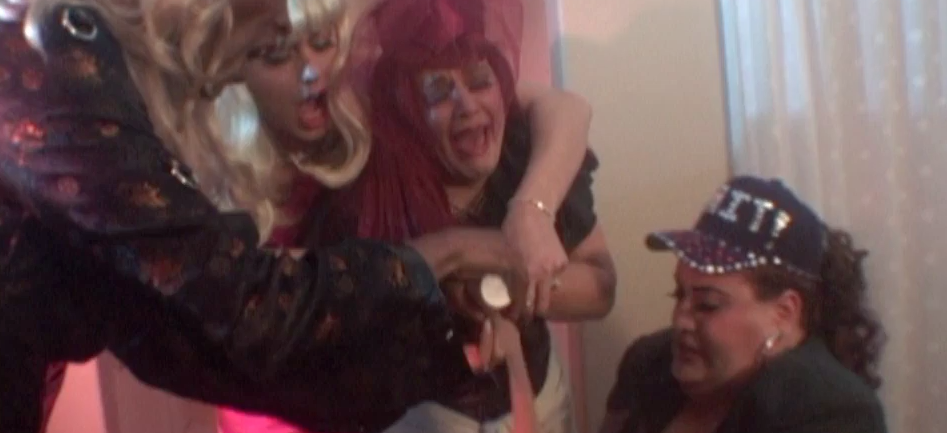 In January 2002, some friends, a few awesome drag queens, and I took to Palo Alto and the streets of San Francisco to film Raised by Drag Queens. Yet another film shot for a pittance (I believe $5,000, if I’m remembering correctly), the cast and crew featured such names as Amy Kelly, Kennedy, Faye Lasheo, Kortney Ryan Ziegler, and Lisa Dewey, to name a few.
In January 2002, some friends, a few awesome drag queens, and I took to Palo Alto and the streets of San Francisco to film Raised by Drag Queens. Yet another film shot for a pittance (I believe $5,000, if I’m remembering correctly), the cast and crew featured such names as Amy Kelly, Kennedy, Faye Lasheo, Kortney Ryan Ziegler, and Lisa Dewey, to name a few.
